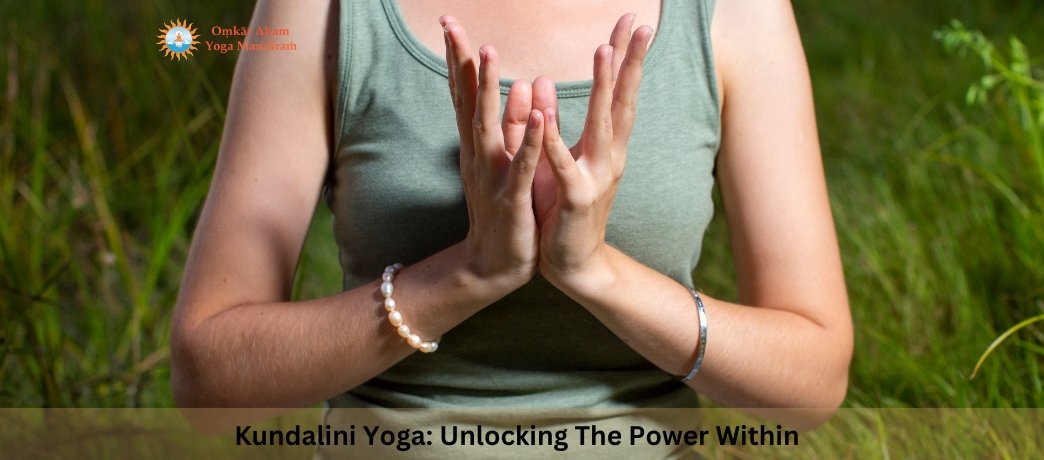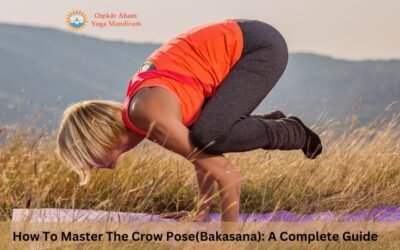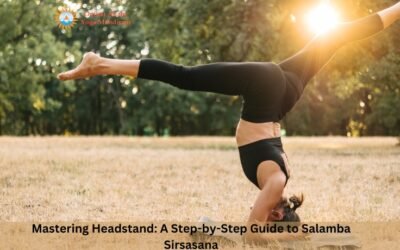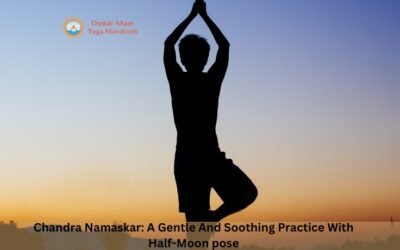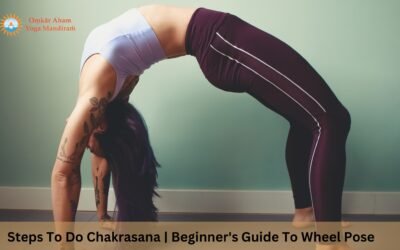Have you ever heard about Kundalini yoga? It’s a unique form of yoga that focuses on energy flowing through your body, but what exactly is Kundalini yoga? Then, if you want to learn more about this practice, you’re in the right place! In this article, we’ll examine everything you need to know about Kundalini yoga, from its history and benefits to how it differs from other forms of yoga.
To begin with, Kundalini yoga is a form of yoga that emphasizes the energy that flows through the body. It is a mixture of physical postures, breathing techniques, meditation, and chanting designed to rouse the Kundalini energy at the bottom of the spine. Kundalini yoga is said to help release this energy and promote spiritual growth and awareness. In this article, we’ll delve deeper into the origins and philosophy of Kundalini yoga and its potential benefits for both the mind and body.
But why should you care about Kundalini yoga? Besides its potential spiritual and physical benefits, Kundalini yoga has gained popularity recently, attracting a wide range of practitioners, from celebrities to everyday people. With the help of experts in the field, we’ll explore the ins and outs of Kundalini yoga, what makes it different from other forms, and how you can combine it into your practice.
So, whether you’re a seasoned yogi or fresher to the practice, this article will deliver all the details you need to know about Kundalini yoga. So, prepare to learn, explore, and awaken your Kundalini energy!
What is Kundalini Yoga?

Kundalini Yoga
Kundalini is the Sanskrit word meaning “coiled serpent.” Since the divine energy was believed to be at the bottom of the spine in the early stages of Eastern religion, the purpose of kundalini awakening is to connect you to the divine power inside yourself.
According to legend, kundalini arousal has been practised covertly for thousands of years. Yogi Bhajan was the teacher who popularised it in Western culture and made it a practice that anybody could engage in.
Bringing the energy of sleep at the base of the spine to life is the aim of kundalini yoga. Two energy lines that go up and around the bottom of the spine connect the seven chakras or energy centres.
Every chakra has a specific function, and maintaining a steady energy field keeps you in excellent health. The balance of the chakras is improved by the movement of kundalini postures -an individual who is more conscious, integrated, aware, at peace, and happy.
Even though kundalini yoga has been practised for thousands of years in India and different parts of South Asia, its origins are mysterious. The notion of Kundalini energy is more ancient than Kundalini yoga, as evidenced by the discovery of allusions in old Vedic documents from 1,000 B.C.
With Kundalini Yoga, the emphasis is mainly on the spiritual components of the practice, such as chanting and breathing. Other yoga styles, such as hatha yoga, where the focus is primarily on the motions, are distinct from this.
Let’s discuss the advantages of practising Kundalini Yoga before moving on to breathing and poses.
How is Kundalini different from other Yoga?
The variations between the many yoga styles available might soon be apparent to those not experienced. The only difference between these activities, in the eyes of many individuals who are unfamiliar with yoga, is how the motions are carried out.
However, yoga is more than specific postures or motions (such as the cobra or lotus). Additionally, there are several ways to compare the available various varieties of yoga. However, the fact that Kundalini yoga is primarily a spiritual exercise is its most distinguishing feature.
If you are familiar with the fundamental ideas of yoga, you might find this remark a bit perplexing because, as you are aware, all yoga is fundamentally spiritual. But in Kundalini yoga, this spiritual component serves as the starting point and the practice’s main point of concentration.
Whatever the case, postures and physical exercises are still used in Kundalini yoga. They highlight Kundalini yoga’s spiritual practices. Due to the emphasis on poses in vinyasa and hatha yoga, many modern practitioners see Kundalini yoga as contradictory to these styles.
Overall, Kundalini yoga is an example of the value of accuracy and repetition. Although it closely relates to your breath, it also permits singing, chanting, and auxiliary motions.
It is practised for a set amount of time to get distinct outcomes: Thirty-one minutes of meditation impacts all body cells and clears the subconscious mind; three minutes of meditation influences the electromagnetic field and blood circulation; eleven minutes of meditation starts to change the nerve and glandular systems of the body.
Benefits of Kundalini Yoga
Regardless of physical condition, availability of free time, or busy schedule, kundalini yoga is accessible to everyone since it is made to fit into the daily grind of work and motherhood.
Kundalini yoga doesn’t rely on an ascetic or self-denial-based attitude as its foundation. Each class consists of a distinct kriya, or series of postures, each of which has a specific function, such as preventing illness or promoting creativity. Each course includes mantras and meditations that help further the kriya’s objective.
There are several benefits to mixing it into your life:
- Increases the resilience of your nervous system. The more resilient your nervous system is, the simpler it will be to maintain your composure under duress.
- Your inner willpower is awakened by kundalini yoga directly in the centre of your solar plexus.
- Kundalini yoga has been associated with a spiritual awakening for many years. Improved creativity, greater vitality, increased empathy, and inner calm are a few advantages people may encounter in this area.
- It makes it easier to connect with that instinctual knowing that comes before conscious reasoning and external rationalization. This connection with yourself will improve the route of your life because intuition is often far better to follow than concepts.
- Strengthens an accepting and understanding attitude by opening the heart centre. You’ll start to be receptive to what life has to offer.
- Breathing alternately via the nostrils balances the left and right hemispheres of the brain. This equilibrium in a rational environment will enhance your creativity.
Poses of Kundalini Yoga
Lotus Pose
Lotus Pose:
Lotus is one of the most prominent yoga positions and a familiar favourite. The fact that it is a seated position also helps. Moving gently is necessary while entering and exiting the position, in any case. Try not to practice the lotus if you have any hip issues.
- Straighten your back while you sit on the ground. Keep in mind that it should be relaxed and in a natural position. Keep your legs spread apart.
- To sit cross-legged, softly bend your knees outward and bring your feet close to your torso.
- Place your left foot on your right thigh and your right foot on top of your left leg.
- You can modify your posture for one or two seconds to get in the zone while breathing in and out. If your trainer recommends pranayama, you can also begin.
Cobra Pose:
The cobra stance is another simple posture to arouse your Kundalini energy. But you ought to stay away from it if you have back issues.
- Start with lying on your stomach with your legs and feet close together. Your feet should be lying on the ground.
- Put your palms behind your shoulders while spreading your arms outward.
- The elbows should be parallel, and the fingers should be facing forward.
- Now elevate your torso while keeping your lower body on the ground. Lift your body as you inhale. Downshift your lower body.
- With your arms straight, elevate your stomach and chest off the ground. As you exhale, continue holding the position for 30 seconds before producing to the beginning position.
Archer Pose:
Archer is the third beginning position you may try. You’ll gain confidence and feel like a warrior as a result.
- Straighten your spine and sit up tall. Stretch your legs on the mat in front of you while sitting upright.
- Slant your back. On an inhalation, bend forward in a sitting position. Keeping your back straight, extend your hands toward your toes.
- Wrap your right hand’s fingers around your right toes. Slowly bring your right foot back and up to your right ear while bending your right knee.
- Straighten your torso out again. Inspect to see if your right foot is still up. Your right elbow should be pointed straight back, and your right leg should be at a 45-degree angle.
- Make a left arm stretch. Grab your left leg with your left hand and then your right leg. Extend your left foot.
- Keep the position. Hold the posture while taking slow, deliberate breaths for fifteen to thirty seconds.
- Let your feet go as you exhale. Release the right foot, then switch to your left side to do the archer position.
Conclusion
Since energy makes up all matter, yoga is a manifestation of unification. Kundalini yoga works to awaken the power that has been asleep at the base of the spine. It is said to have been practised covertly for thousands of years. Kundalini yoga is one of the widely available varieties of yoga. However, yoga’s most significant distinguishing characteristic is that it is primarily a spiritual exercise.
Every lesson consists of a different kriya, or series of positions, singing, chanting, and supportive gestures. Kundalini yoga has long been associated with attaining spiritual enlightenment. The benefits of practising this style of yoga include greater empathy, inner tranquillity, creativity, and vigour.
You can also become a Kundalini Yoga expert by joining our 100 Hour Yoga Teacher Training, 200 Hour Yoga Teacher Training, 300 Hour Yoga Teacher Training, or 500 Hour Yoga Teacher Training.
For further details, contact us at:
Call/WhatsApp: +91-9997744876
Mail us at: info@yogateachertrainingschool.com

